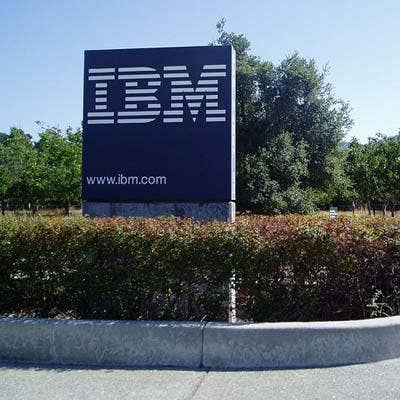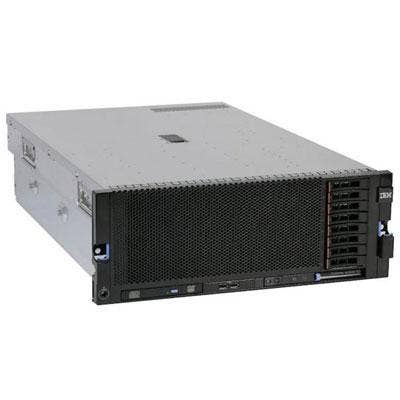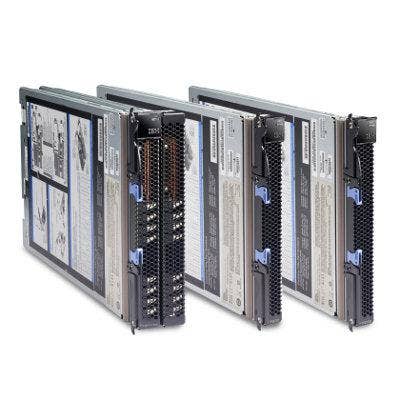9 Things You Need To Know To Be Successful With IBM

Big Blue In Vegas
At IBM's PartnerWorld Conference 2014 in Las Vegas, Big Blue is talking a lot about business transformation for itself and its 140,000 channel partners. The opportunities, said CEO Ginni Rometty, are big data, cloud, and engagement via social and mobile.
So how do partners translate IBM's talking points into aligning closer with the company for success? CRN caught up with three IBM execs in Las Vegas to find out. Execs we spoke with include IBM Global Business Partner General Manager Marc Dupaquier; Michael Gerentine, vice president, IBM Global Business Partners, Marketing; and Doug Balog, general manager of Power Systems.
Here are 9 takeaways for being more successful with IBM as it shifts its strategy toward the future.

IBM is transforming and so is the IBM partner community. What does the IBM PartnerWorld community look like in the not-so-distant future?
IBM is actively recruiting thousands of managed service providers (MSPs) outside its partner community. Its SoftLayer acquisition last year has added more than 21,000 new cloud clients with about 30 percent of those accounts driven through a new stable of channel partners. And as part of a ramp-up of the SoftLayer business, IBM said it's aggressively promoting a SoftLayer referral or reseller program to IBM partners. Michael Gerentine, vice president, IBM Global Business Partners, Marketing, said the partner transition has gone from hardware VARs that have moved to selling software and services, to selling infrastructure as a service, and eventually will go to a Software-as-a-Service model. "It's never going to be all or nothing. It will be a hybrid," Gerentine said.

As it transforms itself, IBM said it must transform the skills of partners to come with it. How will IBM do this? IBM said hardware partners that mainly sell x86 systems will end up Lenovo partners.
"Not many partners are selling hardware only because they can't make any money at it," Michael Gerentine, vice president, IBM Global Business Partners, Marketing, said. "Two years ago, one-quarter of partners were selling software and three-quarters were selling hardware. Now 99 percent of partners sell software and services. If there is one ecosystem of partners that know about transformation better than any other, it's IBM partners."

So how does IBM transform partners quickly into areas where it is going?
"You don't wake up in the morning and say, 'I'm going to be a security partner.' There are some deep skills that are needed. We are doing a lot of things to educate. Each IBM brand has education resources. We have PartnerWorld University, which is traditional classes you take online. And IBM just announced ThinkAcadamy this week that is a video-centric training resource with videos of IBM executives and business partners," Gerentine said.

For many partners, SoftLayer will be their entry point to bringing their customers to the cloud. How lucrative is that going to be once they get there?
One key aspect will be about partners creating revenue via annuities with SoftLayer, Gerentine said. The SoftLayer annuity model is: Year one is 10 percent of revenue on a deal, second year is 8 percent of the deal, and year three and thereafter it's 6 percent. "Once you lock that client in, it's just like the electric company. You are just going to get a check every month. There is really no overhead for the partner," Gerentine said.
Gerentine said most partners will follow a blended model where cloud will account for incremental revenue as clients ramp up to the cloud.

Transformation for partners to a cloud-centric IBM is a process that could take partners up to three years, some say. Can partners get there without tipping the scales balancing risk tolerance vs. disrupting their bread-and-butter business?
"It's not three years. We've seen partners transformed in a year. We had a lot of partners that were selling all hardware two years ago. Today those companies have moved to a managed service provider model. We have thousands of MSPs generating revenue via referrals and reselling SoftLayer today," Gerentine said.
He added that most companies will be ambidextrous with current lines of business not going away. Over time, cloud revenue will become incremental to a balance sheet and eventually will begin to replace more revenue.

Does IBM have any business process that will help with partner enablement for sharpening skills and to accelerate transformation?
IBM piloted a program in 2013 called a Business Transformation Initiative (BTI), where it worked with 90 partners and put them through a makeover boot camp, Gerentine said. "The program invites partners to sit down and talk about things other than pipeline and how many deals did you close," he said. "We do business consulting and find out what partner core competencies are, what their focus is, and what they want to be when they grow up. Are they suited to focus on social, cloud, or big bata analytics? Then it's about finding the right enablement and training that they need to take them to the next level."
He said IBM plans to grow that program to include 200 partners this year.

How do smaller partners that don't have the budget to hire a dozen new people transform to social, mobile, cloud and analytics?
"If you are a small partner, you have to ask yourself what do you want to specialize in? They can't do everything. So it's really important they identify what their core competencies are and what their deficiencies are. They need to find specialization around that one thing they do extremely well. And then they can partner with other partners," Gerentine said.
Gerentine said partners need to hone a business solution and recognize the new dynamic that sales have moved from the back office to the front. "The way money is being spent is changing. Budgets are moving around. The IT people have to realize the money is not just at the CIO's office. There is a shift and partner's marketing for new business should reflect that."

IBM's x86 business is likely headed to Lenovo. For partners deeply invested in x86, is this goodbye?
IBM Global Business Partner General Manager Marc Dupaquier said, "It's not the same sale, it's a different sale. In the old days, you buy a box and run your applications. You can still do that, but the fastest, cheapest way to do it now is put your application on an Intel box in the cloud. It's the same value proposition, and it's easier to sell because your customer doesn’t need the approval of a capital expense. It's just an operating expense. You can get it up and running in the same day."

Should we stop looking at IBM as a hardware company for partners with a midtier customer base?
IBM's x86 servers may be headed to Lenovo, but IBM is making a big push with partners here in Las Vegas for its Linux on Power.
Doug Balog, general manager of Power Systems, is stepping up his campaign to push the Power platform deeper into the enterprise with applications such as big data, cloud computing, analytics and data center services.
"Power is a phenomenal opportunity for partners. With x86 gone, we are putting a huge commitment to Power hardware. I'm not trying to replace the x86 business. I'm not. I am trying to have Power be a great platform for data-centric applications, such as analytics and database. At the same time, Power 8 will be out in the middle of the year."